It’s been eight years since Taiwanese director Hou Hsiao-hsien’s last feature, the Paris-set Flight of the Red Balloon (2007), and the idea for his latest film, The Assassin, had been gestating in his mind for a quarter of a century. But now, Hou’s unique and idiosyncratic take on the wuxia (martial arts films) has finally arrived, and the results prove that it was well worth the wait. The Assassin premiered at Cannes this year (where Hou won the best director award), and recently had high-profile screenings at the Toronto and New York film festivals. And now general audiences will experience an exquisitely beautiful film.
The Assassin is Hou’s fulfillment of his long-extant desire to make his own version of the heroic tales of brave fighters of the distant past, which he grew up reading and watching on film. Centering on a female assassin, it’s based on the story “Nie Yinniang” by ninth-century Tang Dynasty author Pei Xing. It’s set in this time period, a politically volatile time in which militarily powerful provinces threaten the authority of the Tang imperial court.
What distinguishes Hou’s film from most others of its genre is the wonderfully rendered sense of lived-in realism that permeates everything on screen, from the decor and the details of everyday life, to the movements and emotions of the characters. The combination of the meticulously detailed evocations of the time period with the martial arts elements create an almost surreal and gorgeous experience that honors the essence of the genre while at the same time far transcending it.
Hou, as usual, presents his narrative in an elliptical fashion, with many branches and tangents of the plot either obliquely referred to or left off screen altogether, but the main outlines of the story are fairly clear. Nie Yinniang (frequent Hou muse Shu Qi), a young woman in her twenties, was taken from her family at age 10, and she has since been trained and employed as a lethal assassin by her master, the princess-nun Jiaxin (Sheu Fang-yi). Yinniang is tasked with eliminating corrupt officials, as judged by Jiaxin.
A prologue (in black-and-white) introduces us to the way Yinniang dispatches her targets, as well as the style of most of the fight scenes. Clad entirely in black, she kills swiftly, the cut of her blade coinciding with the cut of the camera. These brief bursts of violence are much closer to that seen in samurai movies than in typical Chinese martial arts movies. In a similar way to a samurai, Yinniang abides by a warrior’s code.
But Yinniang is much more than a killing machine, and the conflict between her innate human compassion and her training as an assassin forms the main emotional thrust of the film. At one point, Jiaxin chides Yinniang: “Your skill is matchless, but your mind is hostage to human sentiments.” Yinniang’s failure to carry out one of her assignments leads her to be assigned another task, both as punishment and an opportunity to prove the strength of her willingness to abide by her code.
Yinniang is sent back to her childhood home and tasked with assassinating Lord Tian Ji’an (Chang Chen), the governor of Weibo, a province often in conflict with the imperial court. Tian is also Yinniang’s cousin, and in fact they were to be betrothed in an arranged marriage before Yinniang was sent away. The feelings she still harbors for Tian, as well as her wavering commitment to her warrior’s code, will make her ultimate decision a defining one in terms of her eventual destiny.
There’s much more to the story than this, but the film’s mastery lies less in its narrative than in its exquisite visuals. Except for one scene, The Assassin is shot in the 1.37 square frame aspect ratio, all the better to fully evoke the feeling of a past era that is always fully vivid. Intensely intimate interiors (filmed in Taipei and Japan) are juxtaposed with epic vistas (of China’s Hubei province and Inner Mongolia) that evoke classical Chinese painting and John Ford westerns. Ace cinematographer Mark Lee Ping Bin, a frequent Hou collaborator, simply outdoes himself here. Shots of silk flowing in palace rooms, blood-red sunsets over flowing water, and mountain vistas all become indelibly memorable images. However, they function not simply for their aesthetic beauty but in the service of fully conveying the breadth of the Tang Dynasty society, depicted here with almost documentary-like precision.
As the titular assassin, Shu Qi delivers a central performance as exquisite as the film itself. She has almost no dialogue as a character that often lurks in the shadows or hides behind curtains. She’s an amalgam of Clint Eastwood’s Man with No Name, Toshiro Mifune’s samurai, classic Hollywood melodramatic heroines, and the “new woman” of 1920’s and 1930’s Chinese cinema. Her inimitable presence is the conduit through which we can become emotionally invested in her journey.
All this makes The Assassin a fully and deeply satisfying experience that not only rewards multiple screenings but demands them, if only to better appreciate the endlessly fascinating world Hou and his collaborators have created.

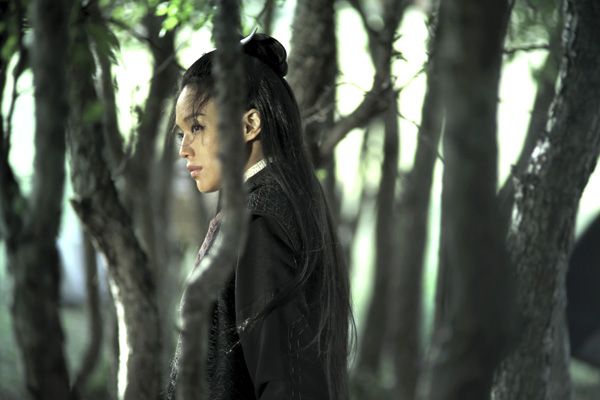

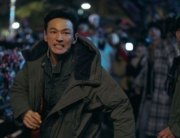
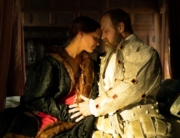
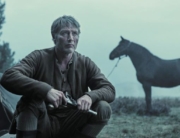
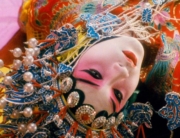










Leave A Comment